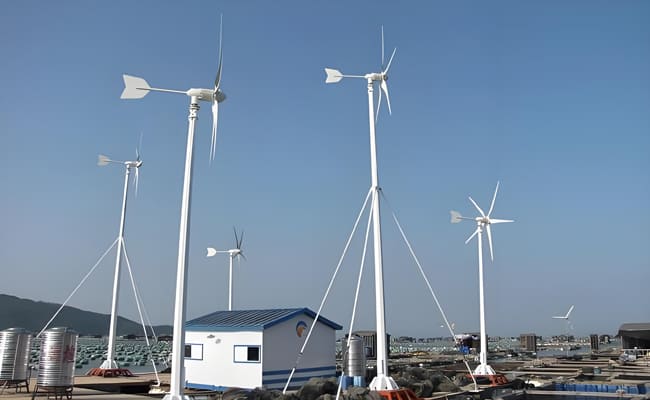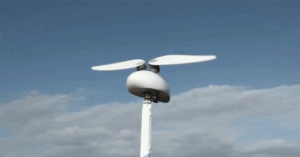
This cute “little rabbit” generates electricity too? That’s right! As it sways its “wings” with the wind, it continuously produces power.
When we think of “wind turbines,” don’t the iconic “three-blade white windmills” immediately come to mind? Beyond this classic shape, real wind turbines come in a variety of fascinating designs.

Why Three Blades?
Windmills, which were the “precursors” to wind turbines, played a key role in drainage in the Netherlands, earning worldwide recognition. The image of the four-blade Dutch windmill is also deeply embedded in people’s minds. Multi-blade windmills, used in the American West for water pumping, were once widely popular. More blades help generate greater power, providing more abundant energy.
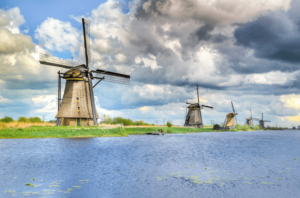
Although four-blade and multi-blade windmills have developed, why did wind turbines settle on three blades?
The number of blades doesn’t directly impact energy efficiency. In fact, too many blades can disturb air flow and reduce wind energy capture efficiency. Wind energy capture devices can only harness up to 59.3% of the wind’s kinetic energy. So, a wind turbine with just one blade could still produce the same amount of electricity.
However, single-blade wind turbines haven’t become mainstream. A single blade creates an extreme imbalance, posing a significant safety risk to the entire wind turbine system. Imagine a large bundle of clothes spinning in a washing machine… the machine would shake violently and even break down.
Two blades in symmetry can alleviate this imbalance, but it’s still not stable enough. Until better load control technology emerges, the use of two-blade wind turbines remains limited.
Three-blade wind turbines solve the balance issue with the best layout, but “weight” becomes a challenge. A single wind turbine blade weighs up to 20 tons, and with three blades, the wind wheel weighs over 60 tons—quite a heavy structure. If the foundation on the ground has flaws, the entire system could collapse.
Some manufacturers have broken up the turbine into smaller parts, using multiple smaller blades, transforming it into something with “four heads and twelve arms.” In 2016, wind power leader Vestas installed a wind turbine with four wind wheels at the Technical University of Denmark. After two years of silent operation, the turbine was completely dismantled. Due to its rarity, the data from this experiment has never been made publicly available.
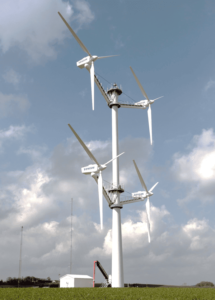
Generating Power Without Blades
Innovative scientists weren’t content with conventional blades and proposed the “bladeless” solution. The legendary electrical genius Nikola Tesla once applied for a patent for a bladeless turbine, but due to the lack of suitable manufacturing materials, the idea eventually fell through.
Building on this idea, researchers developed bladeless wind energy turbines in the shape of a spiral shell. Wind drives an internal disk to rotate, powering a generator to produce electricity. However, this “Peppa Pig”-like wind turbine requires precise manufacturing and alignment of its components, and the wind must align perfectly with the inlet. These strict conditions have limited its development.
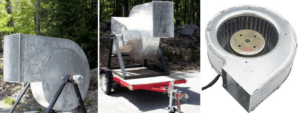
To capture wind from all directions, some have developed bladeless wind energy turbines in the shape of an “inverted megaphone.” Installed in Hengshui, this wind turbine can capture wind from all angles and fully utilize even light breezes. As air enters, the gradually narrowing pipe accelerates the air flow, finally driving a generator at the narrowest section to produce electricity.
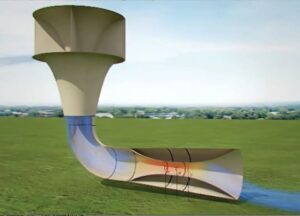
In addition to drawing wind inside to generate power, some companies have gone further, returning to the simplest cylindrical structure, introducing the bladeless wind generator.
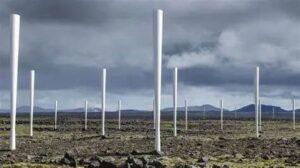
It uses the “Kármán vortex street” phenomenon: when air flows past, it generates vortices that induce the column to vibrate. In simple terms, the column shakes, and electricity is generated. However, the efficiency of this system is limited, and long-term vibration accelerates material wear. Currently, it is not commercially viable.
The Promising Future of Vertical-Axis Wind Turbines
In 2016, a vertical-axis wind turbine began operating at a wind-powered bus stop near the Iceland National Music Center. The turbine’s unusual shape provided power for lighting and electronic products. This system can operate in low wind speeds (2 m/s) and still function properly in hurricane-strength winds (over 50 m/s).
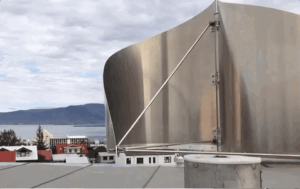
The rotating axis of a vertical-axis wind turbine is perpendicular to the airflow direction, typically also perpendicular to the ground. Unlike traditional horizontal-axis turbines, which need to face the wind, vertical-axis turbines can capture wind from any direction, welcoming all winds.
Vertical-axis turbines also have significantly improved structural strength, allowing them to withstand stronger winds. These characteristics make vertical-axis turbines highly effective in vast oceanic environments.

